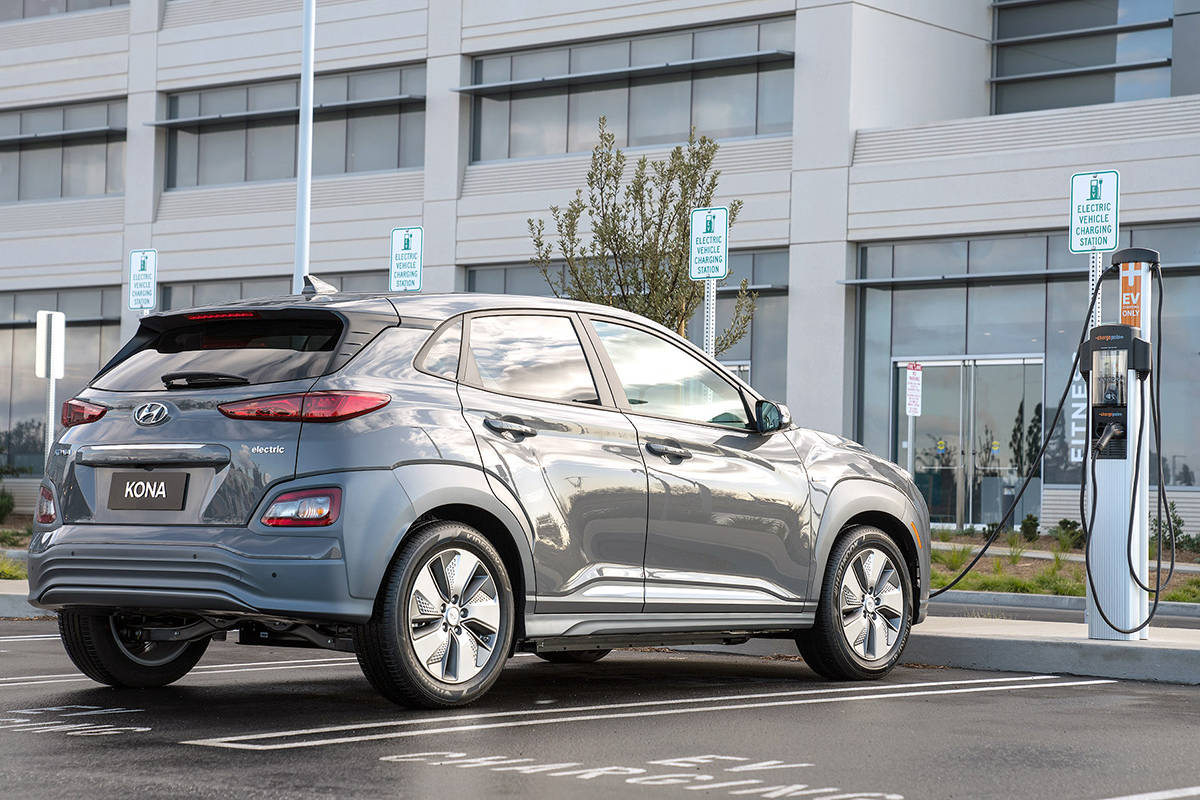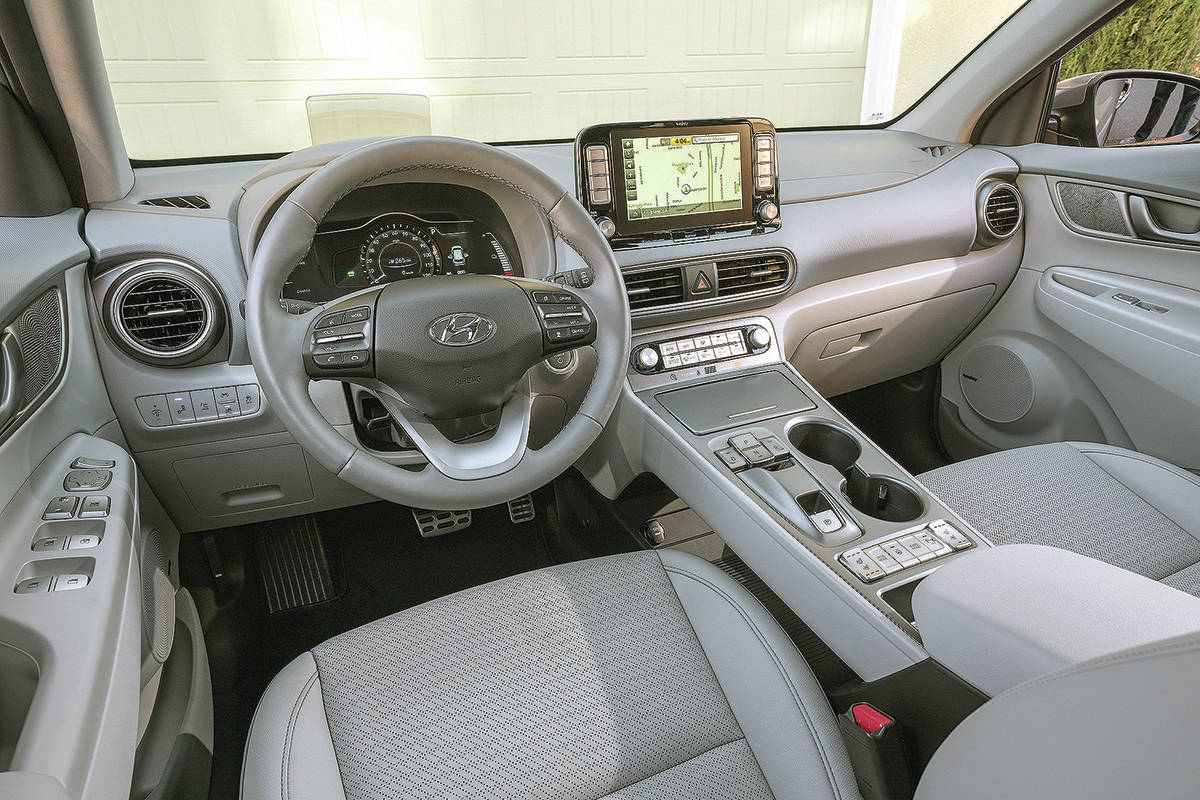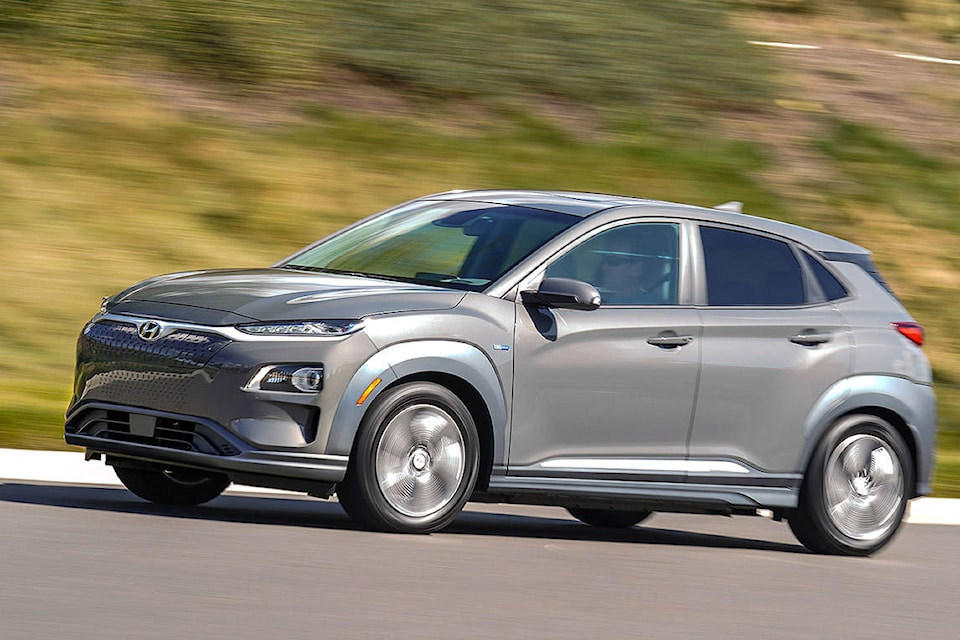The choices in electrified personal transportation are increasing at a steady clip. Itsa���ʴ�ý�s also a fact that by mid-decade such vehicles will assume a significant role in most automakerssa���ʴ�ý� lineups. For anyone who cansa���ʴ�ý�t wait sa���ʴ�ý� or wonsa���ʴ�ý�t wait sa���ʴ�ý� the Hyundai Kona Electric is a leading-edge example of how rapidly this segment has evolved, both in terms of quality and overall performance.
The Kona arrived for 2018 and was joined by the electric version the following model year. It has remained mostly unchanged since then, although the upcoming 2022 model receives minor design changes. Compared with the gasoline-powered Kona, the Electricsa���ʴ�ý�s most noticeable visual difference is the absence of a grille, which has been replaced by a dimpled panel. The door for the battery charge port is camouflaged by those dimples.
The rest of the body looks the same as any other Kona; itsa���ʴ�ý�s one of the more attractive vehicles in its class.
The same goes for the interiorsa���ʴ�ý�s straightforward gauges and readouts for the important battery-range levels. The upright touch-screen has redundant switches for operating the climate, navigation and infotainment systems, the latter with Apple CarPlay and Android connectivity.
The two-tier floor console contains clearly marked pushbuttons for drive, reverse, neutral and park. Paddle controls on the steering column can each be squeezed to increase or decrease the degree of regenerative braking that replenishes at least some of the 64-kilowatt/hour battery packsa���ʴ�ý�s energy.
That energy flows to a 150-kilowatt (201-horsepower) electric motor that produces 290 pound-feet of torque. Itsa���ʴ�ý�s mated to a single-speed transmission that sends power to the front wheels. All-wheel-drive is not offered.
The Kona Electric delivers a very healthy 415 kilometres of maximum range in ideal (warm) climate conditions. An available battery-warming system helps mitigate some of the negative effects on range. In that case, power consumption is generally higher as the headlight and interior-heater use become greater factors, as does the rolling resistance of the tires. The Kona Electric is rated at 2.0 l/100 km equivalency in combined city/highway driving. That means the fuel/electricity still costs money, but a lot less than for an equivalent gasoline-powered Kona.

Using a 240-volt Level 2 charger, it takes nine-plus hours to top up the battery to 100 per cent from 10. That time is cut to about an hour with a 480-volt DC Level 3 commercial fast charger. You could plug into to a 120-volt household socket, but be prepared for two-plus days. For us, a charge from 85 kilometres to the full took about 45 hours using 120.
From a practical standpoint, the Kona Electric matches the gasoline versions when it comes to cabin and stowage space. The rear seat folds completely flat for added room for your gear. Theresa���ʴ�ý�s enough headroom, but not much legroom for adult passengers.
For a spirited driving experience, the Kona Electric doesnsa���ʴ�ý�t disappoint. The motorsa���ʴ�ý�s instant maximum torque sa���ʴ�ý� especially in Sport mode sa���ʴ�ý� smoothly and quietly gets the 1,680-kilogram vehicle up to speed in a hurry. The suspension provides adequate control over rough surfaces without feeling overly jarring. What will likely take getting used to, though, is the touchy regenerative braking system.
The base Essential model starts at $42,700, including destination charges and excluding federal applicable provincial government rebates. It arrives with most necessities, including a number of active-safety technologies such as forward-collision avoidance, lane-keeping assist and blind-spot and rear-traffic warning. Pedestrian detection and parking-distance warning are both optional.
The midgrade Preferred trim level comes with leather seat coverings, power driversa���ʴ�ý�s seat with lumbar support, power sunroof and wireless phone charging.
Among the Ultimate trimsa���ʴ�ý�s exclusive features are heated and ventilated front seats, premium Infinity-brand audio package, head-up driver information display and rain-sensing wipers.
As the popularity of battery-powered vehicles grows, the Kona Electric as well as similarly powered models from a variety of automakers will expand, along with their ability to travel greater distances between charges.

What you should know: 2021 Hyundai Kona Electric
Type: Front-wheel-drive compact electric-powered utility vehicle
Motor (h.p.): 150-kilowatt electric (201)
Transmission: Single-speed
Market position: Models such as the Kona Electric represent the tip of the proverbial iceberg that will only grow throughout the decade as automakers invest billions of dollars in battery-propulsion technologies.
Points: The Konasa���ʴ�ý�s blanked-out nose is typical of many other electric vehicles on the market. sa���ʴ�ý� Interior has user-friendly controls and supportive front seats. sa���ʴ�ý� Standard safety tech covers most contingencies. sa���ʴ�ý� Buttery-smooth power is on tap whenever itsa���ʴ�ý�s needed. sa���ʴ�ý� A Level 2 home charger is a virtual necessity, adding some cost.
Activity: Blind-spot warning with cross-traffic backup alert (std.); active cruise control (std.); front emergency braking (std.); inattentive-driver alert (std.); lane-departure warning (std.); pedestrian detection (opt.)
Le/100 km (city/hwy): 2.0
Base price (incl. destination): $42,700
BY COMPARISON
Volkswagen ID.4
- Base price: $47,000
- RWD electric hatch has 201-h.p. and a 250-mile range. 302-h.p. AWD is opt.
Chevrolet Bolt
- Base price: $46,800
- Small 200 h.p. hatch matches the Konasa���ʴ�ý�s range. 2022 version will cost less.
Kia Soul EV
- Base price: $44,900
- Updated for 2021, uses the same 201 h.p. system as the Kona Electric does.
sa���ʴ�ý� written by Malcom Gunn, Managing Partner at Wheelbase Media
If yousa���ʴ�ý�re interested in new or used vehicles, be sure to visit to find your dream car today! Like us on and follow us on



